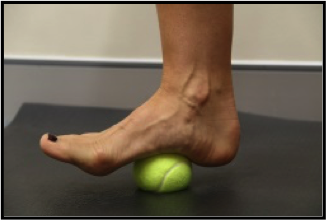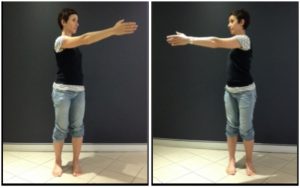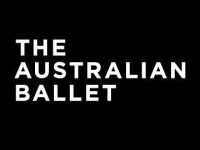Getting the most from your feet …
a 10 minute program that your feet will love
by Sally Harrison from Perfect Form Physiotherapy
Your feet are the primary connection with your body to the ground, and therefore, information about your external environment. Even under normal circumstances we take thousands of steps a day, and the foot is the first point of contact for energy transfer up and throughout the body. As a dancer the foot is subject to far more; jumps, turns, demi and pointe work, tap shoes and the list goes on …
If the foot is not performing in an optimal manner we will get non-optimal and often asymmetrical information feeding up into the body and adapt accordingly. A non-compliant foot can easily lead to knee, hip, pelvic and even jaw problems.
Common complaints such as tight-Achilles, shin pain, big toe pain and bunions can all be attributed to a foot that is not behaving properly for the task at hand. Even if we look at the gait (walking), this is in itself a very complex activity wherein the foot has to move from full supination to pronation, take our weight, store energy and propel us forward and off again. We accept 1 – 1.5 times our body weight as we walk so imagine the forces from repeated jumps and leaps and the load that the tissue need to accept and cope with.
If we have areas of less mobility in the body (hypo) we will have corresponding areas of too much movement (hyper). More often than not it is these hyper areas that become painful or symptom producing. The following foot programme will be looking at overall mobility for the foot and ankle complex and hopefully provide more even movement for the body/movement chain.
We need to bear in mind that foot control is very closely associated with hip and pelvic stability and this shouldn’t be overlooked if you are experiencing foot symptoms.
Following are some important exercises for maintaining fit feet. I hope you benefit from these.
This series of exercise progressions are designed to encourage mobility and natural movement within the foot complex. They need to be performed in the correct order as highlighted below.
1. MELT
We are aiming to create some flexibility in the sole of the foot working over the small muscles of the foot and the plantar fascia which is actually a continuation of the Achilles complex.
Start by releasing the underside of the foot with the tennis ball. Melt and breathe to slowly release tension in this area. Maybe start at the heel and slowly roll towards the toes. You may want to roll gently from left to right also, especially under the mid-foot area.
2. MOULD
Next, we want to encourage some movement through the foot in all directions.
Start by blocking the heel with one hand and rotate/ mobilise the mid-foot with the other hand. We want to hold just in front of the ankle. Move the mid-foot and heel in opposite directions. This action is a little like wringing out a cloth.
(transverse plane)
As an addition you can move the heel and forefoot closer together and then stretch them apart (sagittal plane) or glide the foot from side to side like a fish tail (frontal plane).
3. MOBILISE
 This exercise is designed to encourage a gentle flow between supination and pronation. We want to integrate the lower limb, pelvis and leg, with movement of the foot in a weight-bearing position.
This exercise is designed to encourage a gentle flow between supination and pronation. We want to integrate the lower limb, pelvis and leg, with movement of the foot in a weight-bearing position.
- Start by standing in parallel, feet in tripod/neutral.
- Hold the arms forward at shoulder height and then gently swing them from left to right. As the pelvis moves the thigh will also move with it, pulling the shin and then the foot.
- Allow the feet to move easily from pronation to supination via neutral.
- We are looking for equal range and good quality movement.
(pronation = heel rolls to the inner border, medial arch opens/lengthens, toes drift outwards)
(supination = heel rolls to the outer border, medial arch shortens/lifts, toes drift in, 1st toe stays on floor)
This next exercise helps with increasing weight-bearing dorsi flexion which will help with plie and squat depth.
- Start with the band around the ankle and tied securely from behind you.
- Allow the band to apply a small pull on the ankle from front to back.
- Maintain this sense of pull and perform a small bend. Allow the ankle to ‘slide’ back on the foot as you bend. Think of ‘folding over the band’ and forming a deep ankle crease.
- We want to feel a natural pronation happening with this exercise. The long arch of the foot should lengthen and feel soft.
This sequence of exercises may only take 10 minutes but you will feel the difference before you classes.
For further treatment and rehab for your feet contact us at www.perfectformphysio.com.au or call (02) 9922 7721 for a foot assessment.










